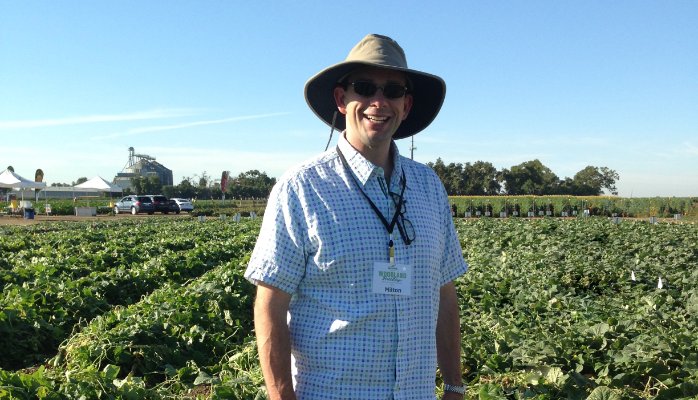News | May 10, 2017 | Read Time: 3 minutes
I Never Wanted to Work for Monsanto

Milton Stokes
Milton Stokes
Growing up in rural Kentucky and working in a restaurant I co-owned with my mom, Ann (the restaurant was named Ann’s Country Kitchen, which reflected the Southern-fried-everything menu), I enjoyed making good, hearty food and learning the principles of business from my mom. An entrepreneur, she also owned a hair salon in our tiny town of Hazel, which had fewer than 500 residents when I left in 1999. If she didn’t do their hair, she fed them—and many times it was both.
The customers were mostly farmers. They came in around the same time each weekday, sat at the same tables, and ordered the same things. I wondered why they were so… consistent. Wouldn’t they get bored with this routine? No, they didn’t.
This food immersion fueled my interest in dietetics, which was my college major at Murray State University. While there, my advisor, Dr. Sally DuFord, said, “Milton, think about internships as far from home as possible, so you can experience as much as possible.” As far I could envision was Connecticut, and through computer matching, I was appointed to a dietetic internship at Yale-New Haven Hospital. That experience opened many doors and forged lasting friendships. It also prepared me to work as a clinical dietitian and clinical nutrition manager in New York City.
When my mom first visited the Big Apple, she was breathless from the hustle and bustle, the tall buildings, and the energy. We spent an hour observing a mime in Times Square. She was captivated by him and many other street performers.
After about six years in New York, I moved back to Connecticut and returned to graduate school focusing on health communication. I landed a dreamy tenure-track professorship at the University of Saint Joseph in Connecticut, which was a wonderful place with engaged and engaging students. The department was delightful—brimming with colleagues who loved what they did. I found students, with all their questions, energizing. One day I received questions about labeling foods with GMOs. “Should they be labeled?” students asked.
That question was easy. “They aren’t different nutritionally from conventionally grown food,” I said, “so, no cause for labeling.” Needing to know more, I called Monsanto to see what they would say.
One call to a friend and dietitian colleague who worked at Monsanto led to an eye-opening educational experience at a Monsanto facility in Mystic, Connecticut. Well, that only generated more questions and enthusiasm around the intersection of food, agriculture, and nutrition. The more I asked and learned, the more fascinated I was with agriculture and how Monsanto was working with farmers around the world. That initial call launched a series of events, from the creation of a new dietitian role, to me applying and interviewing, to accepting the position and moving with my family to St. Louis.
While I never wanted to work for Monsanto, it will be two years in July, and I love the decision I made! Learning new things each day about farmers and modern agriculture, I can’t think of a better place for me in my career.
Looking back on the “consistent” farmers from my mom’s restaurant, I think I now know why they exercised such food routines; their daily visit to Ann’s Country Kitchen was one less uncertainty in the demanding, high-risk world of farming.
Let them have their catfish, green beans, and caramel pie. Eating without a fuss is fine by me if that helps farmers feed the world.









